Our RV / motorhome shopping process
Some of you are wondering how Cathy and I ended up with the motorhome we did, and why we bought in Arizona. It was a very long process that saw us assessing every type of RV from tent trailer to diesel Class A over a period of months – here’s a short summary of it all.
Everyone who is shopping for an RV will have specific wants and don’t-wants in the outfit they eventually choose. Our 2 primary considerations both involved size. It had to be large enough to comfortably hold 2 people, 2 huskies and a cat, and it had to be able to navigate the rough roads and tight camping spots that are our favourite locations.
Some people want a “starter” RV, to test the theory. We knew from spending a month in a little campervan in New Zealand that RVing is a lifestyle that suits us well, so we felt no need to start off small for a possible move up later. We did, however, look at old campervans that we could buy cheaply (under $5,000) and pound into tough spots with no particular concern for scratches or dents.
We didn’t have a vehicle that was suitable for towing a trailer or 5th wheel (though Cathy’s Chevy Tracker might handle a tent trailer), so whatever we chose would entail adding another vehicle to the fleet. Although we came back to them every now and then during the months of shopping, trailers of any kind never made it very far because we wanted something completely self-contained – the fur-kids needed to be with us, and we didn’t want to have to park to get something out of a cupboard.
Budget will be a large part of most people’s decision. For us, the less money spent the better, but we set $45,000 as the high end for the perfect rig, though the total bill for the motorhome we bought will be a few thousand more than that.
The most complicated decision came in choosing a Class C, B or A, and we went back and forth on this for months. Basically, a Class B is a campervan, a Class C has a larger body over a van cab, and a Class A looks like a bus.
Class B is the most fuel efficient by far, largely because it has the smallest and most streamlined front, but the initial purchase price is much higher for a given year/mileage because they’re very popular. Our RV travel plans for the next few years involve relatively short distances and lengthy periods, making fuel economy less of an issue than it will be for some other people.
In the Yukon and Alaska, Class C motorhomes are the most commonly seen. They provide a good balance of features, come in virtually any size you want, and are available at pretty much any price you want to spend. The smaller Cs don’t have full-size beds, and since the fur-kids like to sleep with us, a 27-foot was the size that worked the best for us.
Throughout much of the shopping process, we would often look at the Class As and then decide that they are more than we need. Once we started looking more at a very long-term decision, though, a small A – under 32 feet – would offer the most flexibility. Whatever we decided to do, a small Class A could handle. Part of that, though, is because of my driving experience – a million miles or so driving highway buses gives me a comfort level with a rig that size that a casual user will never get. While that’s not an issue on the highway, it is when you’re in a situation like backing into a tight camping spot at night with no assistance.
Most used motorhomes, though not all, can be bought cheaper in the United States than in Canada, and our experience has been that Arizona and Texas offer the best deals in the western US. As long as you’re very careful about following every step, exporting a used motorhome from the US and importing it into Canada is an easy process – the Registrar of Imported Vehicles at RIV.ca is the place to go for all the information you need about that. The process takes about 15 minutes on the American side of the border crossing you use (I crossed at Sweetgrass, Montana / Coutts, Alberta), an hour on the Canadian side, and then a couple of weeks to get all the paperwork done to license the rig in Canada. The cost is $195 for a federal inspection plus GST on the price you paid for the motorhome. Buying from a dealer who does a lot of sales to Canadians can make the process even easier.
We eventually found a 2007 Fleetwood Terra LX 31M, a 31-foot-long Class A with 2 slideouts (more about slideouts below). It was at La Mesa RV in Tucson, but we had been talking to a salesman at their West Phoenix operation, and they moved it for me once we came to an agreement on the price. The purchase was much more complicated than it should have been, but still worked out well in the long run. In the middle of July, I flew to Phoenix to confirm the purchase and drive it home. The rig had many more cosmetic flaws than the single small ding on a luggage door that had been described, but it was still a good deal at about $11,000 off the original $54,500 list price. It only has 30,000 miles on the chassis, but the generator has almost 1,000 hours on it (4-5 times what you would usually expect to see on a rig of this age), so it’s been used a lot in places without electricity.
So, finally, here’s what we now have:
Sitting in the driveway this morning, with a 24-foot Class C belonging to friends from BC who camped there for the night.
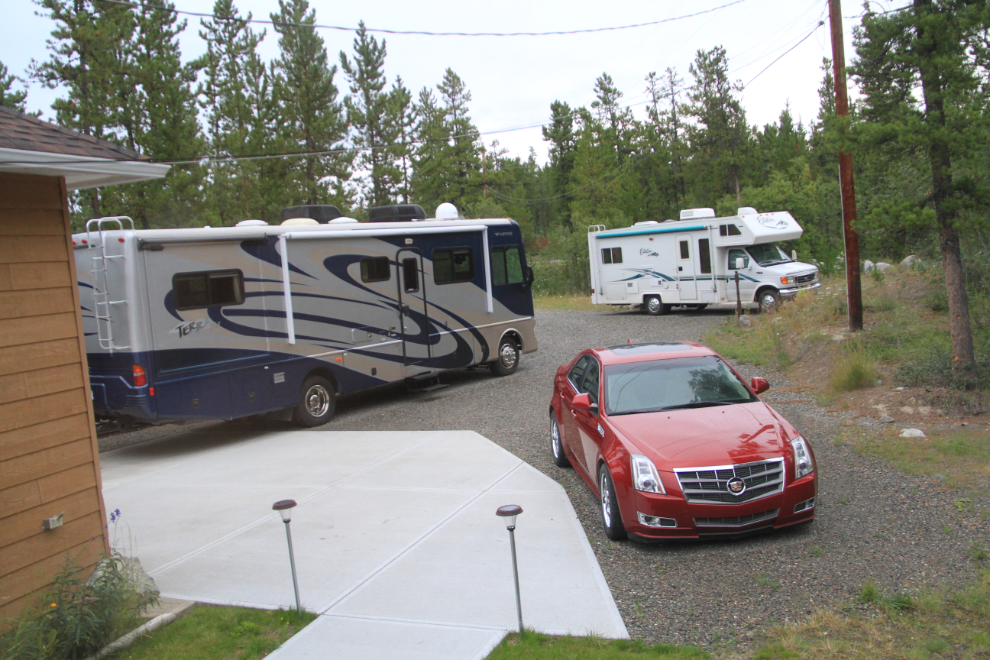
The driver’s position is very comfortable. In particular, the Flexsteel seat still felt great even at the end of a 7-day, 3,400-mile drive.
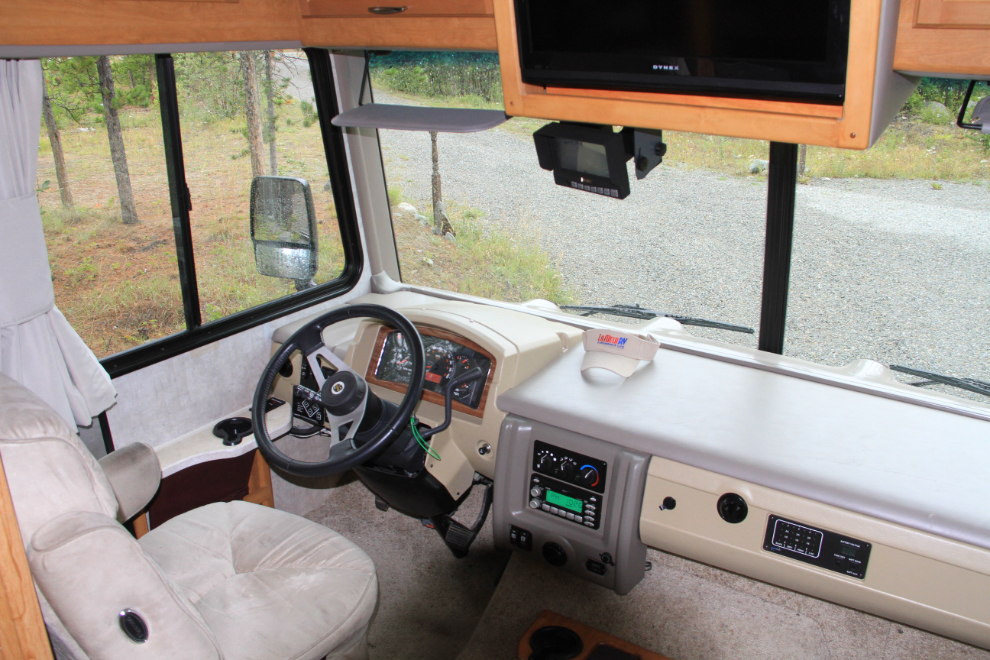
Looking back from the front of the rig, as it looks while driving (with the slide in). A slideout is a section of the motorhome that extends out at the push of a button, typically 20 inches or so. Some motorhomes don’t have any, most now have 1, 2 or 3 of them. Ours has 2, one in the living room and one in the bedroom. This is a view that shoppers need to see, as some motorhomes are almost unusable with the slides in. While new Class As are, I think, all 102 inches wide, if you’re looking for an older one, many are only 96 inches wide, and that can make a big difference.
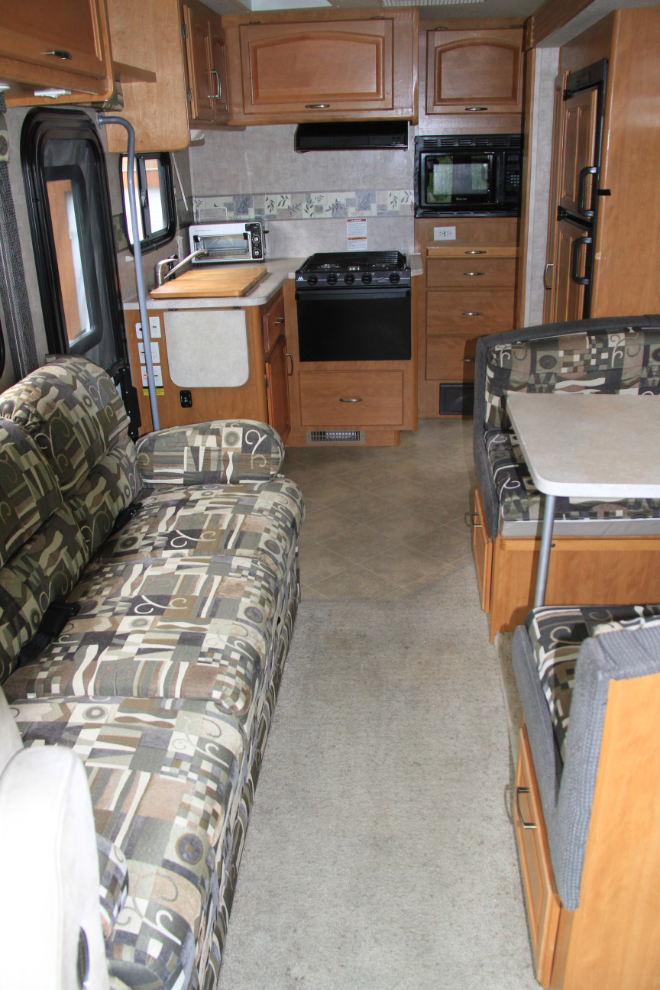
With the living room slide out, it feels like you could throw a party! There’s certainly plenty of room for 2 huskies to stretch out.
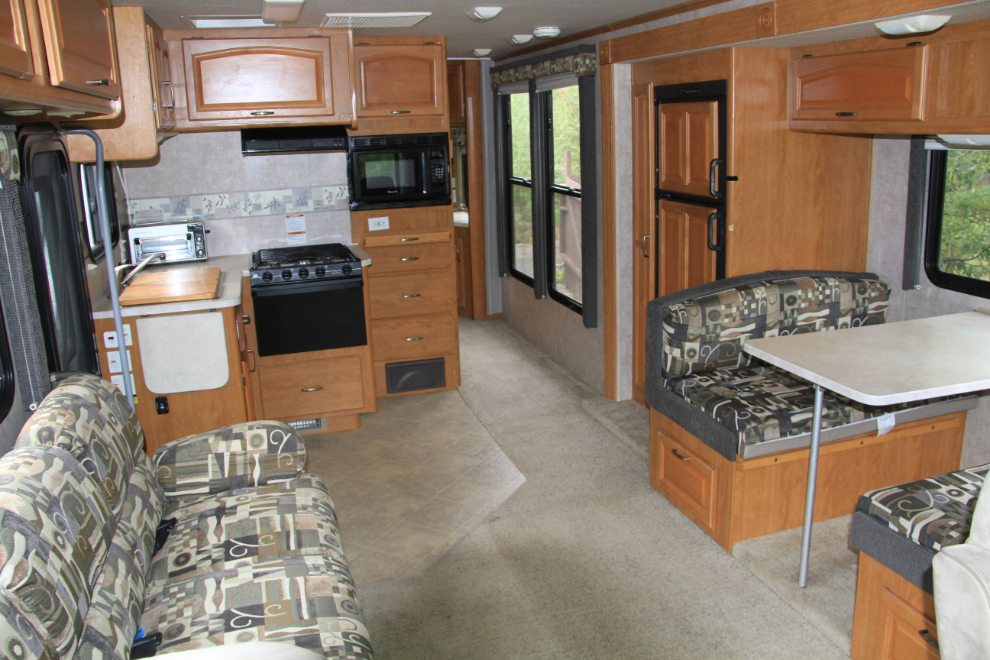
Looking to the front from the kitchen, with the slide out.
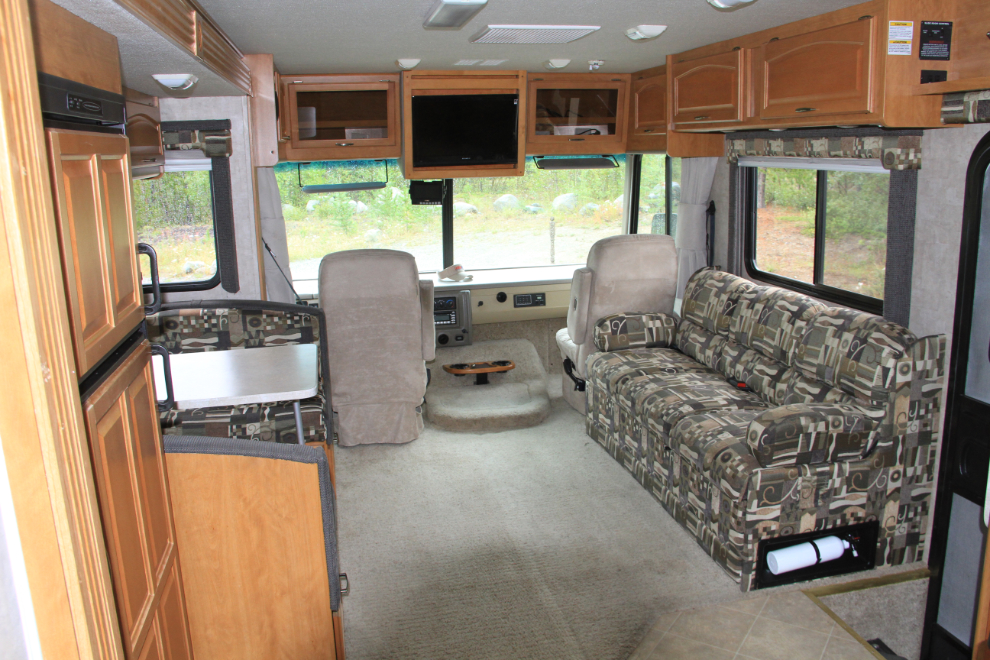
The kitchen has several features we like – while the microwave is almost standard now, the oven and the window are not. The extendable shelves add a fair bit of useful counter space at meal prep time. A toaster oven can stay on the counter, but the coffee maker has to be stored in a cabinet when we hit the road.
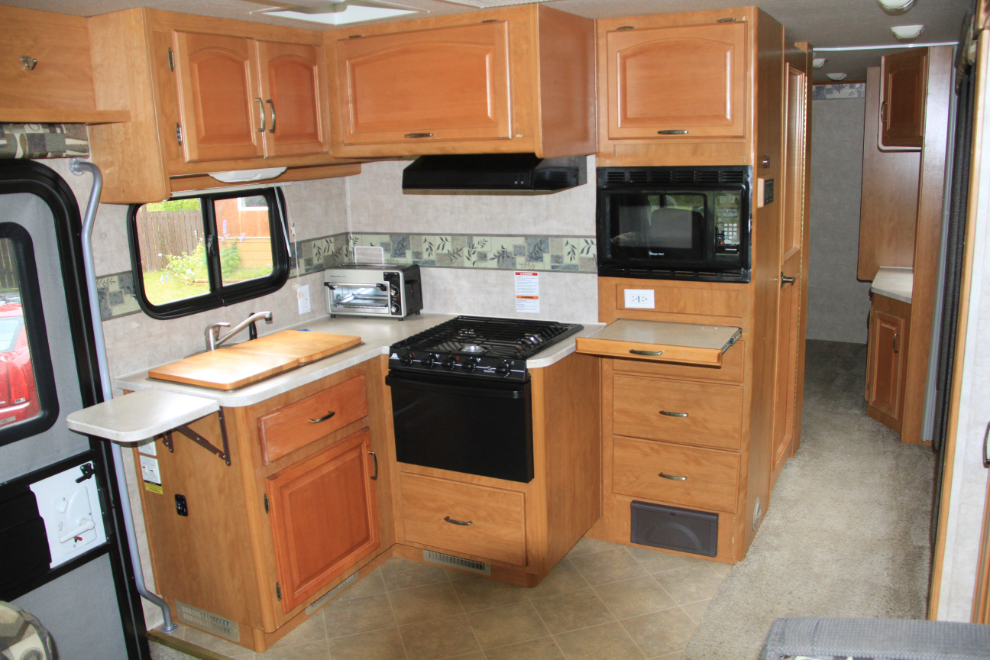
This photo shows an unusual feature that kept us coming back to this floor plan over and over – a hallway on the side instead of down the center as is the norm. The huge windows are wonderful for opening the rig up visually. What looks like cabinets to the right is the fridge and freezer.
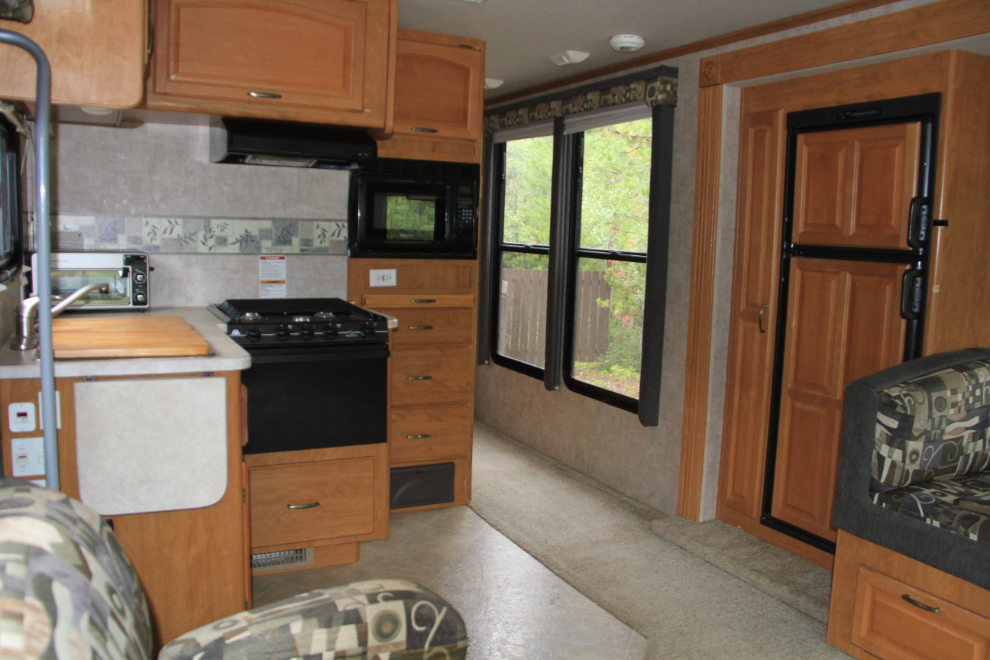
The side hallway also allows for a huge bathroom, with 2 doors, one into the hall and one into the bedroom. Having a spot for the cat’s litter box was important to us, and it fits nicely beside the toilet for humans.
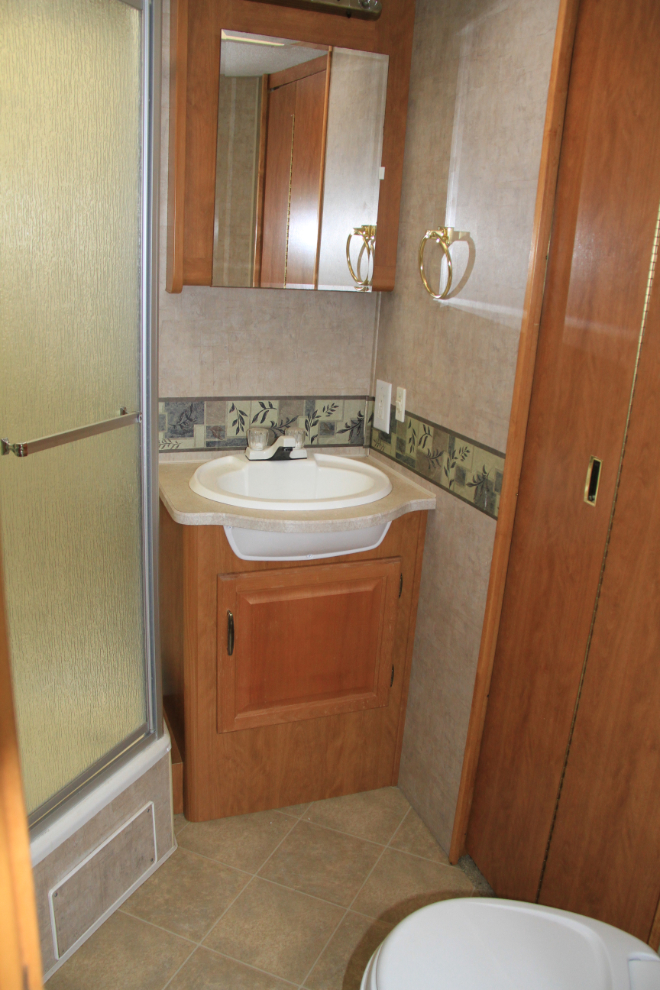
The bedroom, with the slide out. This is a queen bed that you can walk around. When the slide is in, the end of the bed slips under the wardrobe to the right.
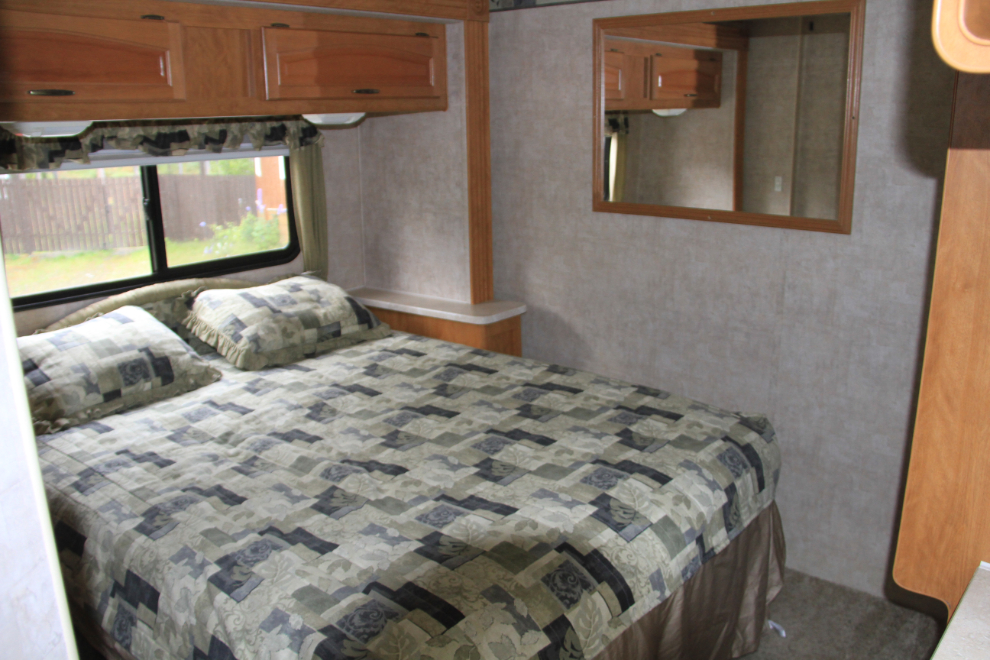
The other end of the bedroom, with the slide out.
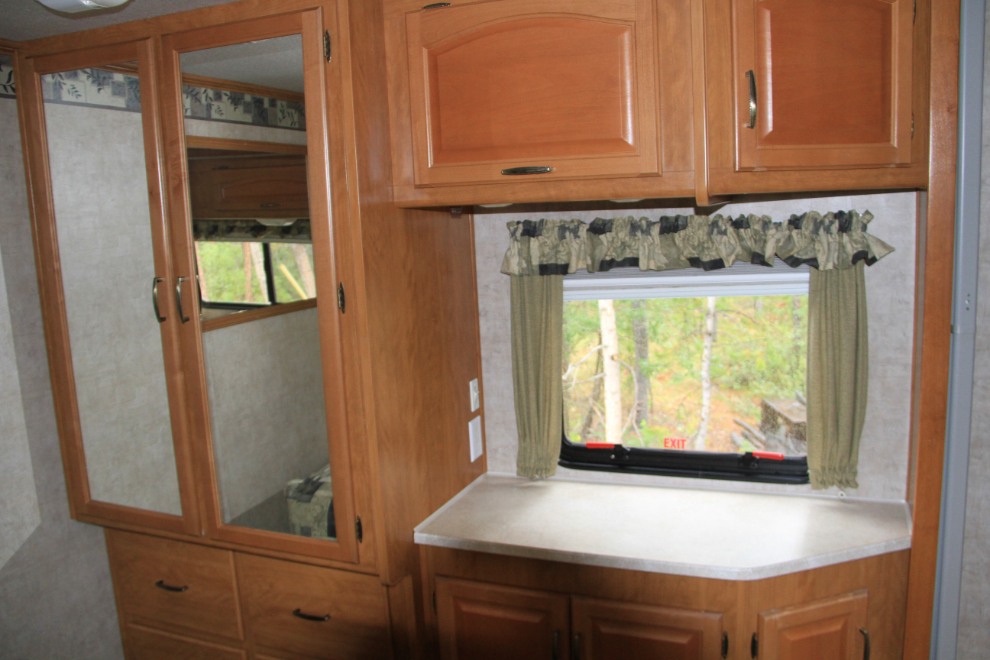
Above the bedroom slide, you can see a little awning that keeps leaves and other debris from getting into the slide mechanism – although they are very common, not all motorhomes have them.
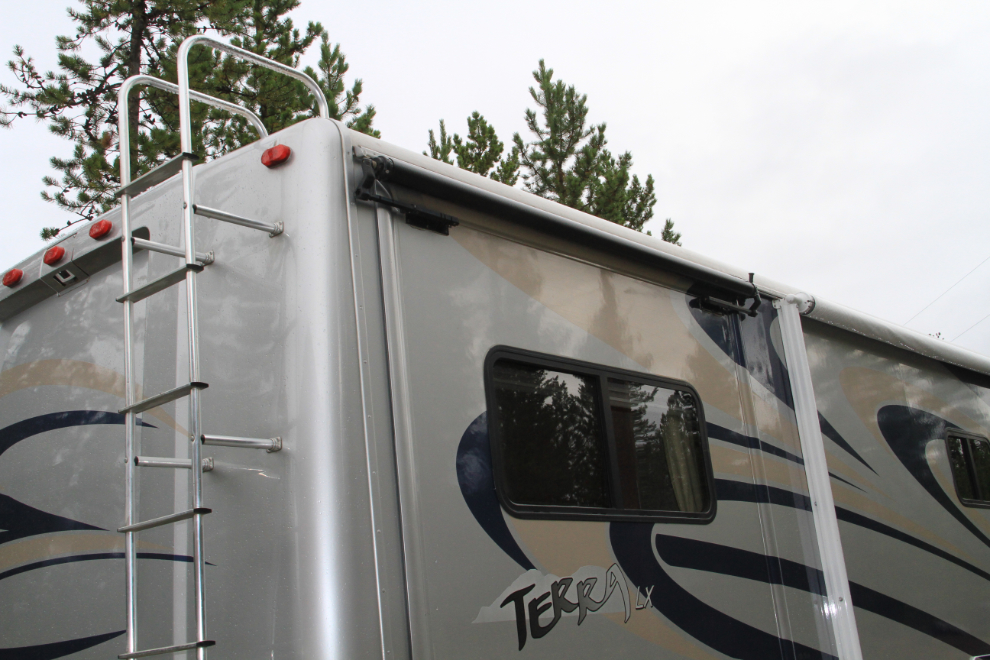
That’s a quick look at what has brought us to this point. In about a week we’ll be getting a form from RIV telling us what modifications need to be made to get it licensed in Canada, if any. Daytime running lights and a metric speedometer are the usual ones, but this rig already has both.
To get the dogs and cat used to it, we’re camping in the driveway for a few days. So far, it’s working out great – they’ll all very comfortable in it. Tomorrow we’ll take them for a short drive in it.
I hope that you’ve found this to be of some interest. If you have any questions about our buying process or yours, I’d be happy to chat with you.
